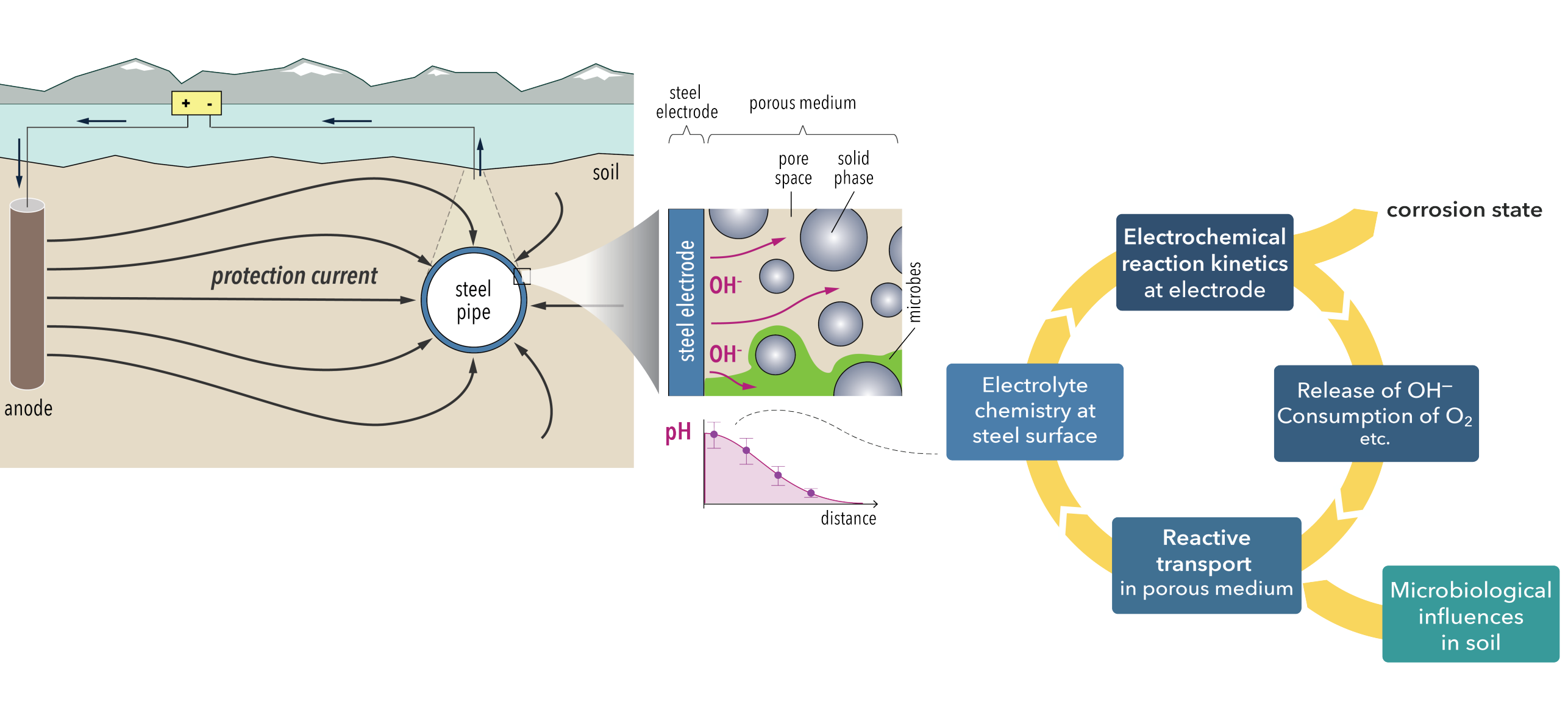TAMING CORROSION – Towards mastering the long-standing challenge of ageing infrastructures in corrosive environments
Responsible: Prof. Dr. Ueli Angst
Subprojects: Fabio Furcas, Federico Martinelli-Orlando, Dr. Zhidong Zhang
Collaborations: external page Prof. Dr. Burkan Isgor (Oregon State University, US), external page Prof. Dr. Barbara Lothenbach (EMPA)
Funding: European Research Council (ERC)

Background
This project proposes a new approach to the long-standing challenge of mitigating corrosion of infrastructures – such as bridges, pipelines, etc. The socio-economic burden of replacing and repairing infrastructures due to corrosion is staggering. In the EU alone, estimates are in the range of 250 billion € annually, with an expected steep increase over the coming decades. This urgently calls for new, cost-effective corrosion mitigation strategies to prolong the useful life of ageing civil infrastructures. Electrochemical corrosion protection (ECP) methods have a large potential to play a key role in addressing this challenge. However, to match these expectations, game-changing advances are needed in both science and engineering. Limited routine use and poor engineering practice of ECP can be traced to insufficient theoretical grounds and a lack of fundamental quantification of key processes.
Aims and objectives
The aim of this proposal is to develop the scientific basis that is needed to develop scientifically anchored engineering models for ECP. Ultimately, the aim is to thereby unlock the potential of ECP as an innovative solution to the grand challenge of rapidly deteriorating infrastructures.
Methodology
A major novelty of this proposal is to combine state-of-the-art reactive transport modeling in porous media with rigorous corrosion science and electrochemistry. The aim is to develop a comprehensive, numerical model framework on the basis of fundamental principles, which permits the reliable prediction of ECP in reactive porous media (soil, concrete). As shown in the figure above, the model considers the interdependency of all involved processes, namely electrochemical reaction kinetics at the electrode as well as transport and reactions of various species in the porous medium. A particular focus lies on integrating iron species reactions, both their thermodynamics and kinetics, in the reactive module of the model framework.
To provide the needed input data for the model (at the fundamental level of the considered physical, chemical, and electrochemical processes) and to validate the model, a series of experiments is performed. These experiments seek to quantify the microstructure of the porous medium surrounding the steel, in particular at the steel/porous medium interface. Additionally, dedicated experiments are used to quantify the temporal and spatial variability of electrolyte chemistry during ECP. For more information see here.
Finally, on the basis of the scientific deliverables, we will seek to develop an engineering model for the prediction of ECP.